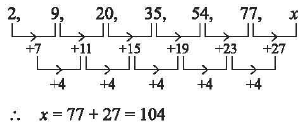UGC NET Paper1 Previous Year Solved Papers - 6th December 2019 Evening Shift
21. Which of the following theories can be applied to classroom communication?
- Option : A
- Explanation : Theory of social constructivism is the idea that human development is socially situated and knowledge is constructed through interaction with others. Hence, this theory applies to classroom communication, too. Audience marginalization theory conveys the discriminatory paucity of information and communication reaching a person, group, or concept considered as insignificant or peripheral. Ritualistic theory asserts that focused interaction or ritual, is at the heart of all social dynamics; as rituals generate group emotions that are linked to symbols, forming the basis for beliefs, thinking, morality, and culture. Theory of hegemony is the idea that the ruling class can manipulate the value system and mores of a society, so that their view becomes the general view.
- Option : B
- Explanation : Like any hypothesis, a substantive hypothesis is ao assumption about the relation between two or more variables. It is called substantive for the purpose of distinguishing it from the statistical hypothesis (Null, Alternative) and also because it is not operationalized. An operationalized hypothesis phrased clearly to show how the variables are manipulated or measured or how the main concepts were put into effect. In the eventuality of rejection of the Null Hypothesis after quantitative data analysis, the substantive research hypothesis should be accepted.
- Option : B
- Explanation : Objective and short answer type tests and see k only factual answer to be stated in limited number of words. Projective tests are a type of personality test in which the individual must respond to ambiguous scenes, words or images or in some cases even draw. Unlike objective tests, the answers to projective tests can be very varied and there are no correct or incorrect answers. Essay type tests require the skill to create descriptive answers by composing good, meaningful and grammatically correct sentences in a logical and impressive style.



